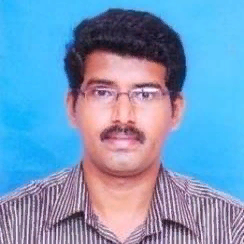
Shivashankara S
Work place: Department of Computer Science & Engineering, Sri Jayachamarajendra College of Engineering, Mysuru, India
E-mail: shivashankar.research@gmail.com
Website:
Research Interests: Data Structures and Algorithms, Image Processing, Computer Architecture and Organization, Pattern Recognition, Computer systems and computational processes
Biography
Shivashankara S, Research Scholar at Sri Jayachamarajendra College of Engineering, Mysuru (Visvesvaraya Technological University, Belagavi), India. Born on April 29, 1980. B.E (2005), M.Tech (2008) from Visvesvaraya Technological University, Belagavi, India. Lecturer (2005), Asst. Prof. (2011) of Computer Science and Engineering. He has published 3 scientific papers in international and national journals and conference proceedings. The main research interests include Image Processing and Pattern Recognition, and Machine Learning.
Author Articles
American Sign Language Recognition System: An Optimal Approach
DOI: https://doi.org/10.5815/ijigsp.2018.08.03, Pub. Date: 8 Aug. 2018
The Sign language is a visual language used by the people with the speech and hearing disabilities for communication in their daily conversation activities. It is completely an optical communication language through its native grammar, be unlike fundamentally from that of oral languages. In this research paper, presented an optimal approach, whose major objective is to accomplish the transliteration of 24 static sign language alphabets and numbers of American Sign Language into humanoid or machine decipherable English manuscript. Pre-processing operations of the signed input gesture are done in the first phase. In the next phase, the various region properties of pre-processed gesture image is computed. In the final phase, based on the properties calculated of earlier phase, the transliteration of signed gesture into text has been carried out. This paper also presents the statistical result evaluation with the comparative graphical depiction of existing techniques and proposed technique.
[...] Read more.Other Articles
Subscribe to receive issue release notifications and newsletters from MECS Press journals